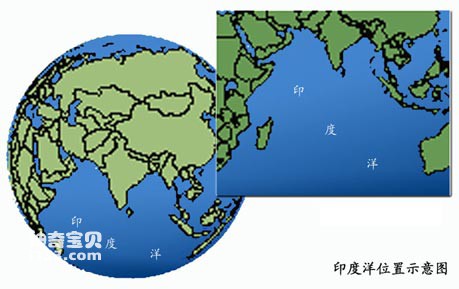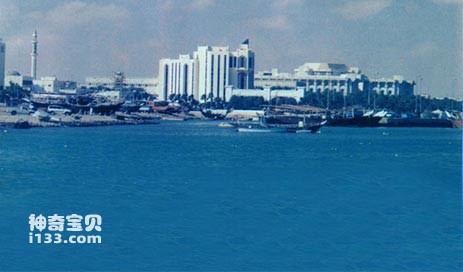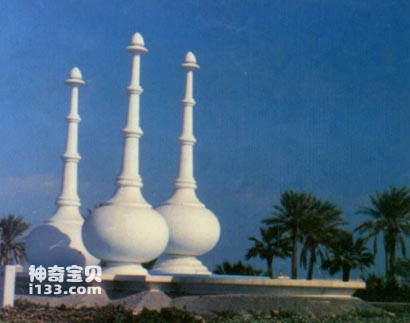The Indian Ocean is between Asia, Africa, Oceania and Antarctica. It is the third largest ocean in the world, with a total area of 74.917 million square kilometers, about 1/5 of the total ocean area. Its average depth is 3897 meters and the deepest is 7729 meters. The northern part of the Indian Ocean is closed and the southern part is open. Around the Cape of Good Hope in the southwest, it is connected to the Atlantic Ocean. In the east, it flows into the Pacific Ocean through the Strait of Malacca and many other waterways. The northwest leads to the Mediterranean Sea through the Red Sea and Suez Canal.

Diagram of the location of the Indian Ocean

Mumbai, the largest port city in the Indian Ocean
In ancient times, China called the Indian Ocean the Western Ocean. Zheng He, the famous navigator of the Ming Dynasty, led his fleet on seven voyages to the "Western Ocean" in the early 15th century, which is now the Indian Ocean. Ancient Greece once called the Indian Ocean the "Eritrean Sea", which means "red sea". This may be because when Greece entered the Indian Ocean through the Red Sea, it was too impressed by the color of the Red Sea, so it "implanted the old story" and said the Indian Ocean was also red. In 1515 AD, the European geographer Schener changed this ocean to the "Indian Ocean of the East" on a map. "East" is from the perspective of Europeans, compared to the Atlantic Ocean. At that time, Europe knew that there was India in the east, which was a very civilized and fertile country. At the end of the 15th century, the Portuguese navigator Vasco da Gama circumnavigated the Cape of Good Hope, entered this ocean, and found India. He officially called the "ocean leading to India" the Indian Ocean.

seychelles islands
The main body of the Indian Ocean is located between 15° north latitude and 40° south latitude, and most of it is in the tropics and subtropics. So it is a tropical ocean. The climate is relatively warm, and the water temperature and air temperature are relatively high. The salinity is also relatively high. The salinity of the Red Sea is as high as 42, making it one of the sea areas with the highest salinity. In the southern part of the Indian Ocean, the ocean currents are relatively stable and maintain a counterclockwise circulation all year round. It is composed of the South Equatorial Current, the Madagascar Warm Current, the westerly drift and the Western Australian Cold Current. In the northern part of the Indian Ocean, ocean currents change with the seasons. In winter, they are blown by the northeast monsoon, forming a counterclockwise circulation; in summer, due to the strong southwest monsoon, the direction of the ocean current changes to clockwise again.

Tel Aviv, the commercial and financial center of Israel
The Indian Ocean is rich in undersea oil and gas resources, with annual production accounting for approximately 40% of the world's total ocean oil and gas production. The Persian Gulf is the world's largest undersea oil production area. Saudi Arabia and Kuwait along the coast are world-famous oil-producing countries. This is an important oil supplier for developed countries such as the United States and Japan. The Strait of Hormuz chokes the mouth of the Persian Gulf, and more than 30,000 oil tankers pass through it every year. The Indian Ocean passes through the Suez Canal in the northwest, the Cape of Good Hope in the southwest, and the Strait of Malacca in the northeast. It is an important oil transportation line in the world. The United States and others regard the Persian Gulf as their oil depot and the Strait of Hormuz as the main valve of the oil depot. In January 1990, they fought for oil in the Gulf War, which destroyed a large number of oil depots and oil wells, causing smoke and fire to billow along the Gulf coast. It burned for several months and the sea area was seriously polluted. There is a lot of oil floating on the sea surface, a large number of fish and shrimps die, and seabirds have their wings stuck to the oil and cannot fly.

The capital of the State of Qatar--Doha

Sculptures with Arab national characteristics
animal tags:
We created this article in conjunction with AI technology, then made sure it was fact-checked and edited by a Animals Top editor.